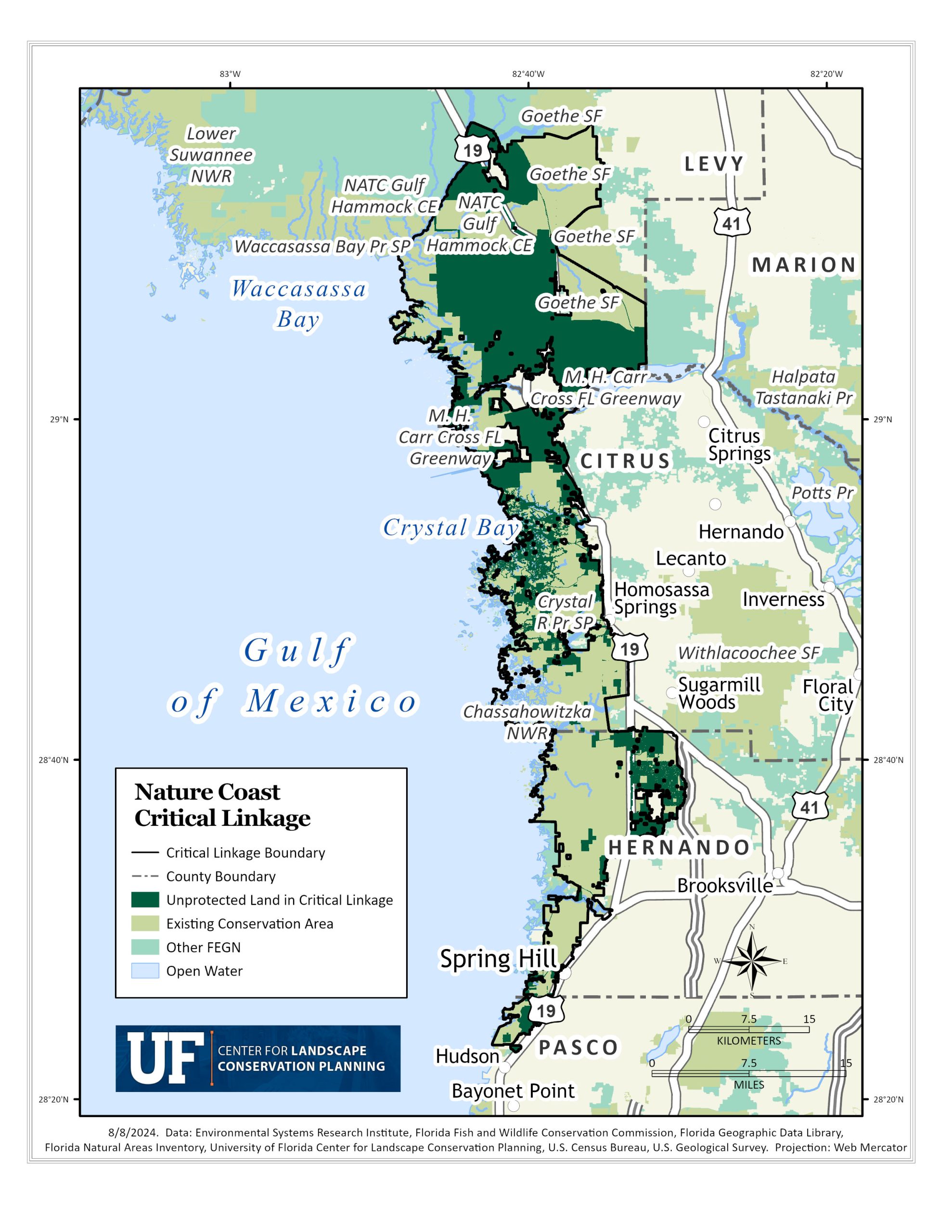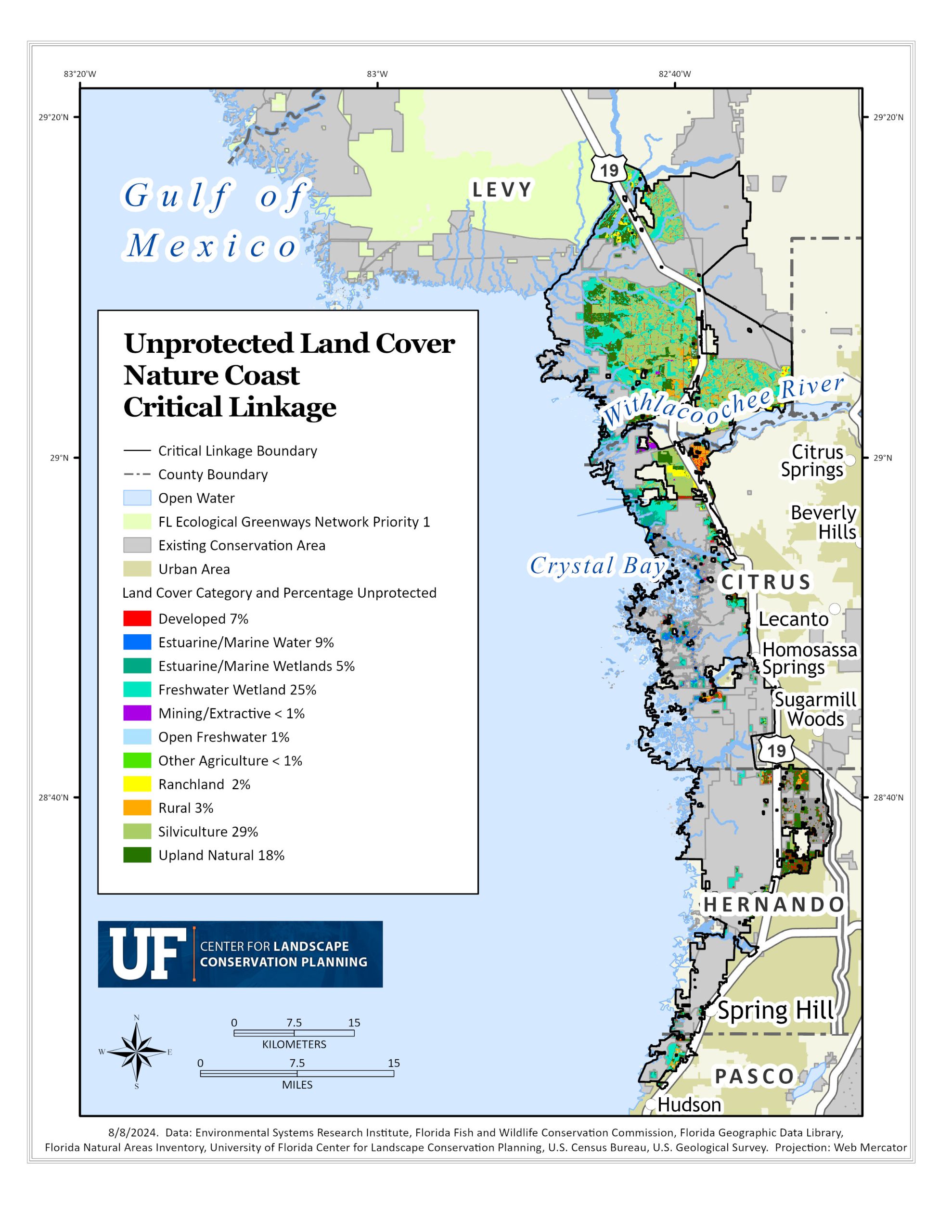The Nature Coast Critical Linkage
North of Tampa, the Nature Coast Critical Linkage seeks to preserve gaps within the southernmost portion of Florida’s west coast that is a viable corridor for the Florida Ecological Greenways Network and Florida Wildlife Corridor. It would create a narrow yet crucial corridor between inland preserves and management areas and the coastal preserves and management areas to the west, as well as connect northward to the Big Bend region.

Chances are, if you have seen iconic photos of Florida Manatees in crystal clear spring water, they were captured at one of the many rivers or spring basins local to this linkage. The Chassahowitzha, Withlacoochee, Crystal and Homosassa Rivers are home to numerous first magnitude springs, as well as hundreds of unnamed, hidden springs. Weeki Wachee, Homosassa, and Three Sisters Springs are popular recreation destinations as well as historic Florida tourism sites. They are also important warm-water refuges for manatees in the winter months. Each spring faces challenges due to saltwater intrusion, decrease in historic flow and nitrate enrichment. More frequently occurring Blue-green algae blooms from nitrogen pollution, is sounding the alarm for nutrient overload issues causing the degradation of water quality, aquatic habitat and public health risks. The degradation of water negatively impacts submerged aquatic vegetation growth, a vital resource for manatees that seek the spring for warm water refuge in the winter.
The Nature Coast Critical Linkage is highly endangered due to sea level rise and development threats. It has already been narrowed to its current state due to development west of U.S. Highway 19, and much of already protected tidal marshland is expected to be forever altered by sea level rise. These two threats can effectively squeeze this corridor to a point where too much fragmentation takes place for viable corridor connections. These pressures also have impacted the health of the local ecosystems, including the very waterways loved by those who call this region home, such as contributing the blue-green algae, reduced flow, and other negative impacts the springs of the region are facing.
The focus for the future of the linkage is comprised of the preservation of two narrow networks: connect existing conservation lands west of U.S. Highway 19 to the conservation areas and ranches north of Citrus County; such as Gulf Hammock State Wildlife Management Area, and provide some connection between coastal conservation lands west of U.S. Highway 19 to Withlacoochee State Forest and other FEGN land that provide connections to the central portion of the state. This would allow for some coastal migration of habitat due to sea level rise, as well as preserve vital coastal to inland connections for species like the Florida Black Bear. The challenges for the Florida Black Bear, habitat loss, degradation and fragmentation as well as human-bear conflict, are especially prevalent in the nature coast region. The two pathways identified for future conservation efforts would provide northward and eastward connections that would benefit black bear movement and could alleviate human-bear conflict such as vehicle strikes from crossing roadways. However, safe outlets for bears to move from this isolated area is a concern as the nature coast population dwindles.

Unprotected Land Cover Map for the Nature Coast Linkage
The future of the linkage is dependent on the protection of currently unprotected land within this FEGN / Florida Wildlife Corridor priority one region. This map provides a breakdown of the types of unprotected land cover in the Nature Coast linkage.

